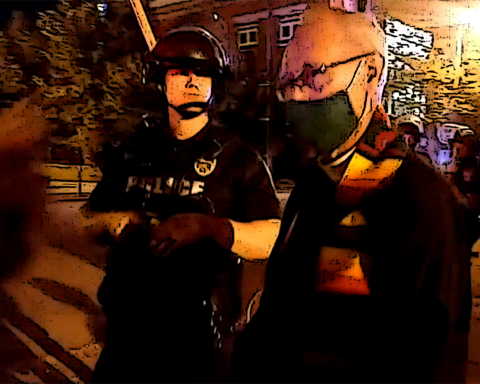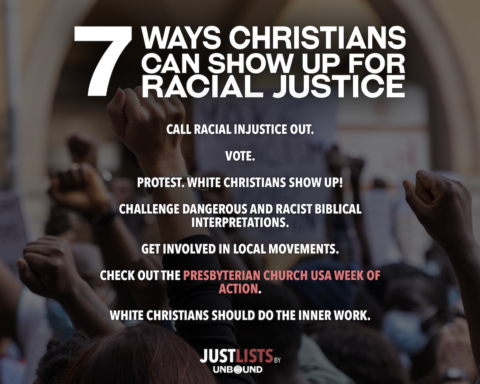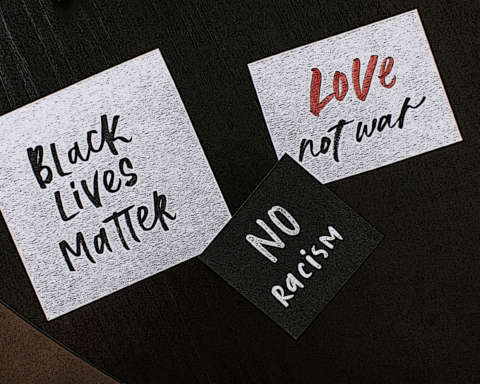Twitter and Asian-American Feminism

Some say that my teaching is nonsense.
Others call it lofty but impractical.
But to those who have looked inside themselves,
this nonsense makes perfect sense.
And to those who put it into practice,
this loftiness has roots that go deep.
–Laozi, Lao Tsu: Tao Te Ching
Article shared from Horizons
#NotYourAsianSidekick was a trend that surprisingly blew up on Twitter in the middle of December 2013. In just 24 hours, 45,000 tweets (140 character posts on the social media site) referenced #NotYourAsianSidekick, and it spent nearly eight hours as the top trending topic on Twitter—all thanks to the initiative of graduate student, writer and activist, Suey Park. More importantly, in the midst of conversations about Asian American identity, Twitter also made space for such meaty topics as sexism, feminism, body image, and immigration rights, which are issues woven into the experience of women of color, and specifically Asian American women.
___________________________________________
It is not just the privileged, academics and politicians at the table: It is anyone who has access to the internet
___________________________________________
In a way, the response was not surprising. Young adults (both Millennial/Generation Y and the later-born Gen Xers) are becoming increasingly vocal about social justice issues. Since there are so many venues—online and IRL (in real life)—in which people can not only express their opinions but ignite social movements that are truly grassroots, it is no wonder that young adults are at the forefront. Bloggers, journalists, scholars, pastors, writers, and artists participated in this particular conversation around Asian American identity. This specific conversation proved more broadly that potential for social change multiplies as more and more people engage in shaping the discourse that affects general social consciousness.
Awareness and Activism: Mobilizing Online
However, it was not universally seen as a paramount occasion, as Kai Ma wrote for Time: “…in conversations about #NotYourAsianSidekick, two seemingly conflicting facts stand out. The first is that a global movement around Asian-American feminism has been ignited. The second is that this movement is more than several decades old.”
 A particularly powerful tweet by@mari_matsuda featured the picture on the left and read: “ #NotYourAsianSidekick dug up this old circular w/ me, Yuri, Helen, Grace. Fierce.@gregorycendana RT @isabelspeaking pic.twitter.com/wy9U6G1StF“
A particularly powerful tweet by@mari_matsuda featured the picture on the left and read: “ #NotYourAsianSidekick dug up this old circular w/ me, Yuri, Helen, Grace. Fierce.@gregorycendana RT @isabelspeaking pic.twitter.com/wy9U6G1StF“
“Asian-American feminists have been battling these issues for generations,” activist scholar Mari Matsuda tweeted. “We theorized #NotYourAsianSidekick ideas since the 70′s but kids gotta learn it from a damn hashtag. Still no Asian Am Studies at most [universities].” And though many bloggers and writers including Kai Ma are asking “Now what?” I cannot help but be heartened by the way connections are being forged across the country. These connections are happening because more people are entering into the conversations.
The questions the older generation of Asian Americans asked in the 70s—about Asian American identity, Asian American feminism, and feminism broadly—are being discussed by a broader base today. It is not just the privileged, academics and politicians at the table: It is anyone who has access to the internet. And this virtual space is a way for different generations to join together in this work.
Stories IRL (In Real Life): Filling in the Gaps
Asian Americans have been mobilizing and fighting for recognition of their unique experiences for a while now. Still, much of the wider culture is hardly informed about Asian American history. My first encounter with any writing about Asian American community was in seminary when I picked up Helen Zia’s Asian American Dreams: The Emergence of an American People (New York: Farrar, Straus, Giroux, 2001). I devoured it in three days, weeping to myself in a Panera over stories about violence that made my blood run cold. Why didn’t I know any of this when I was younger?
The old adage “No history, no self. Know history, know self” comes to mind as I reflect on that late-in-life discovery. I felt like all my insides had been hogtied until then. The more I read, the more I struggled against those bindings, as the truth in these stories spoke directly into the gaps in my life—at the very least, the memories of growing up in white suburbia while attending a Korean Presbyterian church and feeling something was amiss.
___________________________________________
One of the more salient characteristics of many Asian Americans is the experience of rootlessness—being uprooted and trying to put down new roots in foreign soil.
___________________________________________
The Net, Twitterverse, blogosphere, Facebook-land, whatever the World Wide Web is called these days, is the place of encounters for a young adult generation that is becoming for the most part perceptibly rootless. Our traditional root systems were in our local soil—our relationships with neighbors, our congregations’ activities and our face-to-face encounters. But these roots are not necessarily the primary identity shapers when it is so easy and fulfilling to create community online.
Rootlessness and Putting Down New Roots
 But what happens when the more traditional markers of geography, region, and culture do not solely define a person anymore? Is the resulting rootlessness necessarily positive? Negative? What does this do to one’s identity? One’s faith? One’s calling and sense of vocation? What are the new categories for identity? What’s the etiquette for our social behavior and interactions online? What are the expectations? When a person’s interaction with someone across the globe sparks an interest and relationship but the place of overlap is virtual, who is to say it is any less an indication of real community?
But what happens when the more traditional markers of geography, region, and culture do not solely define a person anymore? Is the resulting rootlessness necessarily positive? Negative? What does this do to one’s identity? One’s faith? One’s calling and sense of vocation? What are the new categories for identity? What’s the etiquette for our social behavior and interactions online? What are the expectations? When a person’s interaction with someone across the globe sparks an interest and relationship but the place of overlap is virtual, who is to say it is any less an indication of real community?
In short, what does real community look like today?
One of the more salient characteristics of many Asian Americans is the experience of rootlessness—being uprooted and trying to put down new roots in foreign soil. Like a genetic mutation, this rootlessness passes from one generation to the next. I have heard from immigrant Asians and third-generation Asian Americans how they deal with questions about their origins, citizenship and legitimacy, about living in diaspora, away from their ancestral home.
Recognizing Diaspora as Genuine Community
Kwok Pui-Lan’s work in Postcolonial Imagination and Feminist Theology (Louisville, KY: Westminster John Knox, 2005) continues to help me imagine how to redeem these experiences of rootlessness, of diaspora. It is “a fluid and challenging site to raise questions about the construction of the center and the periphery, the negotiation of multiple loyalties and identities, the relationship between the ‘home’ and the ‘world,’ the political and theoretical implications of border crossing, and the identity of the dislocated diasporized female subject” (p. 45).
 Diasporas are communities around the world that disrupt the local culture by virtue of being a different culture. That can feel threatening to the local culture, but also offers potential for growth. Diaspora communities bubble with potential and allow the Holy Spirit to move and work to change the larger communities (and the diaspora ones). Kwok goes on: “James Clifford describes the situation of those living in diaspora in this way: ‘Diaspora communities, constituted by displacement, are sustained in hybrid historical conjunctures. With varying degrees of urgency they negotiate and resist the social realities of poverty, violence, policing, racism, and political and economic inequality. They articulate alternative public spheres, interpretive communities where critical alternatives (both traditional and emergent) can be expressed’” (p. 46).
Diasporas are communities around the world that disrupt the local culture by virtue of being a different culture. That can feel threatening to the local culture, but also offers potential for growth. Diaspora communities bubble with potential and allow the Holy Spirit to move and work to change the larger communities (and the diaspora ones). Kwok goes on: “James Clifford describes the situation of those living in diaspora in this way: ‘Diaspora communities, constituted by displacement, are sustained in hybrid historical conjunctures. With varying degrees of urgency they negotiate and resist the social realities of poverty, violence, policing, racism, and political and economic inequality. They articulate alternative public spheres, interpretive communities where critical alternatives (both traditional and emergent) can be expressed’” (p. 46).
Rather than creating divisions between people, if approached with a spirit of compassion and openness, and anchoring in one’s shared humanity with all people, encounters between majority and diaspora communities can be marked by intense connections. Kwok writes further that “a diasporic consciousness finds similarities and differences in both familiar territories and unexpected corners,” awakening a sense of interconnectedness, and the possibility of profound help from fellow human beings, where “one catches glimpses of oneself in a fleeting moment or in a fragment in someone else’s story” (p. 50).
___________________________________________
Diasporas are communities around the world that disrupt the local culture by virtue of being a different culture. That can feel threatening to the local culture, but also offers potential for growth.
___________________________________________
The descendants of Asian immigrants in the United States have learned by necessity to be fluid and inhabit multiple communities. Some might call it code-switching, or speaking a different language, with a different accent or in a colloquial way, depending on the group; others might say it is simply exercising the ability to occupy that liminal, in-between space no matter what the context.
Diaspora and Imaginative Ways of Being Church
Internet communities are also diaspora. For young people, particularly the college students and young adults I encounter on a regular basis, community happens in a myriad of ways and at various levels. In a world where mobility—not necessarily couched in the conventional terms of upward or downward—is an eventuality because of job markets, changing standards of living, relationships, and family, a broader definition of community and identity is essential. One way young people stay rooted in their rootlessness is through these virtual diasporas. They provide platforms so young people can inhabit multiple identities or aspects of their identity.

Even more pertinent to the church is the way the online generation is shifting the necessary aspects of community, including the experiences of celebrating and mourning. With a click we can “like” or “favorite” someone’s update, or even provide a word of encouragement almost instantaneously when someone faces a difficult situation. The way we might experience elements of worship—celebrating, mourning, praying, and singing—may also evolve to further support diasporic communities where being rooted is lived out in fresh ways.
When a young woman like Lena Dunham, writer, producer, and actor in the HBO series Girls, is considered “the voice of her generation,” we can see where, despite the changing times, so much remains the same. Dunham plays Hannah, a twenty-something girl living in Brooklyn, trying to make it as a writer. In her August 13, 2013, article, “Almost kind of getting it together,” The Weeklings writer and editor Chloe Pantazi notes how Hannah is not a new character for a new generation. “She is a later model of the girl we’ve inherited from a particular tradition, which began with Mary McCarthy’s 1963 novel, The Group, a coming-of-age story centered on eight Vassar graduates as they assemble their respective adult lives through work, marriage, sex, travel, and friendship in 1930s New York.” Sound familiar? The tagline of the HBO show is “Almost kind of getting it together.”
Online and IRL: Platform for Transformation
The show’s appeal is its optimism mixed with messy relationships, life plans that go awry all the while allowing for a truly heinous and messy, but weirdly beautiful transformation in all the characters, and in their community. At the heart of it is the familiar journey of a young person finding her path. The path for online communities may be equally uncertain, but Asian Americans learned long ago that ambiguity is not something to fear.
___________________________________________
Even more pertinent to the church is the way the online generation is shifting the necessary aspects of community, including the experiences of celebrating and mourning.
___________________________________________
Pantazi sums up the way she hears and lives this message by saying, “McCarthy established in her landmark novel that ‘Experience was just a question of trial and error.’ It’s this wise little nugget of truth that seems to be embedded deep in the soil of New York, wrapped up in The Group, passed down to Girls, and handed from Hannah to me. Almost getting things kind of together. . . she’s helping me to become myself.”
Mobilizing community. Hashtags. Surprising overlap and relationships. Lines wiped away in the sand and boundaries broken. Finding oneself in the fragment of another’s story and his/herstory. Genuine collaboration. Mixed lives and interconnectedness. Creative gatherings. Virtual associations. Diaspora. Becoming.
This is the stuff of the Millennials. And, it just may be the stuff of the future church.
*****
AUTHOR BIO: Mihee Kim-Kort is an ordained Presbyterian pastor and college minister for UKIRK@IU, a collaborative ministry between the two local Presbyterian churches to college students at Indiana University–Bloomington.
Read more articles from the young adult issue!





Unbound Social